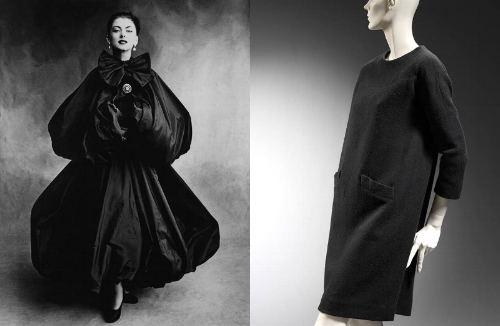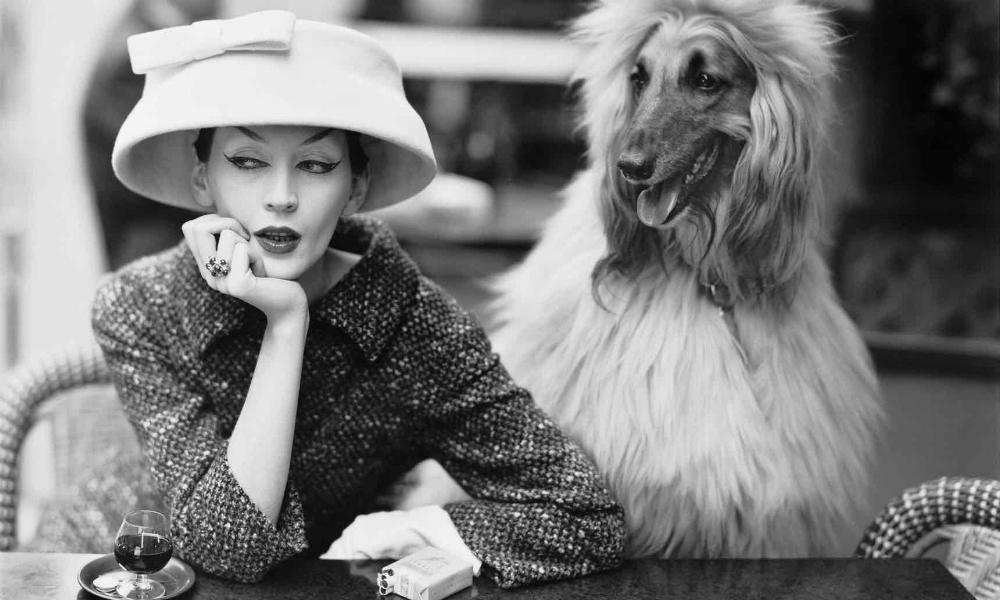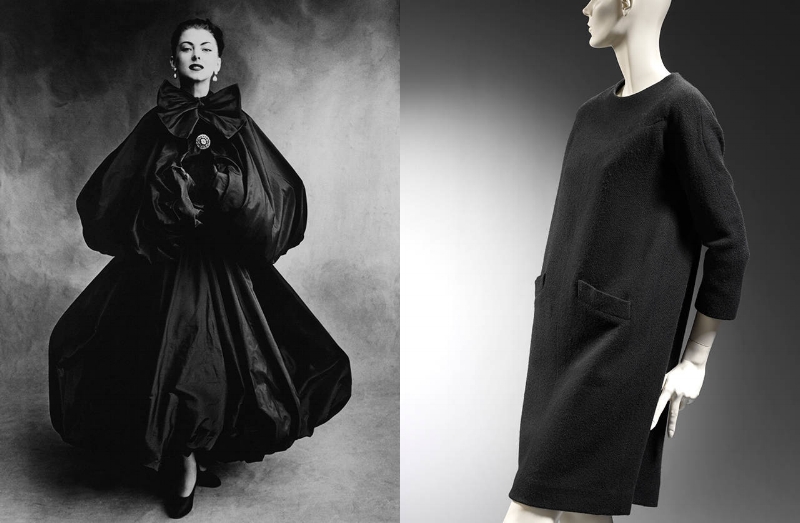Balenciaga’s Uncompromising Creativity at Heart of V&A Exhibition
X-ray photograph of silk taffeta evening dress by Cristóbal Balenciaga, 1955, Paris, France. X-ray by Nick Veasey, 2016. © Nick Veasey
“He was the hero to every serious designer. He took fashion to an art plane it had never reached before and I think that it will never reach again”
Vogue editor Diana Vreeland once said, “Balenciaga gave the world fashion. He was the beginning of everything, everything that is news — forever. Mention anything, raincoats, black stockings, the most luxurious fashions in the world — great fabrics…the color, the color, good God, the color. I used to have my secretary sit next to me at the collections and take down his marvelous combinations of color. He gave the world fashion. He gave the femmes du monde clothes.”
Left to right: Model Wearing Balenciaga Evening Dress and Cape, photograph by Irving Penn for Vogue, 1950. © Condé Nast. Sack dress, Cristóbal Balenciaga, 1957, Paris. Museum no. T.90-1973. © Victoria and Albert Museum, London
The couturier’s mastery of cut and volume will be the focus of “Balenciaga: Shaping Fashion” at the Victoria & Albert Museum, a blockbuster exhibition focusing on his most creative years: the 1950s‑1960s, often considered the golden age of couture.
“Haute couture is like an orchestra, whose conductor is [Cristóbal] Balenciaga… We other couturiers are musicians and we follow the direction he gives”
During that period, the Spanish couturier championed a new elegant silhouette that gave women freedom of movement within the architectural volumes of his garments. Going in the opposite direction of Christian Dior’s New Look, with its defined waist, he offered spherical balloon jackets (1953), high-waist baby doll dress (1954), the shirt dress, and the ‘sack’ dress (1957), all revolutionary silhouettes at the time. The ‘sack,’ in essence a shift dress, first met with hostility by the press and clients, but would eventually lead to the ubiquitous mini-dress of the ‘60s.
Born in 1895 in Spain, Balenciaga learned to sew at an early age with his mother, a seamstress, and by 1917 he was opening his first boutique in San Sebastian, followed later with others in Madrid and Barcelona. Forced to close because of the Spanish Civil War, he relocated to Paris in 1937, establishing his new maison on Avenue George V.
Dovima with Sacha, cloche and suit by Balenciaga, Café des Deux Magots, Paris, 1955. Photograph by Richard Avedon © The Richard Avedon Foundation
“Balenciaga alone is a couturier in the truest sense of the word. Only he is capable of cutting material, assembling a creation and sewing it by hand, the others are simply fashion designers.”
Alberta Tiburzi in 'envelope' dress by Cristóbal Balenciaga. Photograph by Hiro Wakabayashi for Harper's Bazaar, June 1967. © Hiro 1967
Throughout the ‘50s and ‘60s he would dress some of the most elegant women in the world, while also training many couturiers who would quickly make their mark. Amongst them Emanuel Ungaro once remarked that Balenciaga had "laid the foundations of modernity."
Opening May 27 and curated by Cassie Davies-Strodder, the V&A exhibition will highlight the designer’s “uncompromising creativity” and examine how his innovative use of fabrics and sharp tailoring influenced haute couture in the 20th century. Balenciaga is often described as being a 'designer's designer' because some knowledge of tailoring is needed to fully appreciate his clothes and the exhibition will present a collaboration with x-ray artist Nick Veasey to expose some of the ‘inner’ secrets of one of Balenciaga’s architectural silhouettes.
Along with one hundred garments, ‘Balenciaga: Shaping Fashion’ will also present twenty hats, archive sketches, photographs, fabric samples and catwalk footage. The exhibition will be divided into three sections: ‘Front of House’ will recreate Balenciaga’s salons and highlight the customer experience his clients used to enjoy, ‘Workrooms’ will give an insight to his work spaces, while ‘Balenciaga’s Legacy’ will feature creations by over 30 designers, such as pieces by his former apprentices André Courrèges and Emanuel Ungaro, along with creations by J.W. Anderson, Hubert de Givenchy and Erdem, to name a few.
The V&A notes that their Balenciaga pieces “are some of the most frequently studied in our Fashion collections, remaining a constant source of inspiration for the next generation of fashion designers.”







